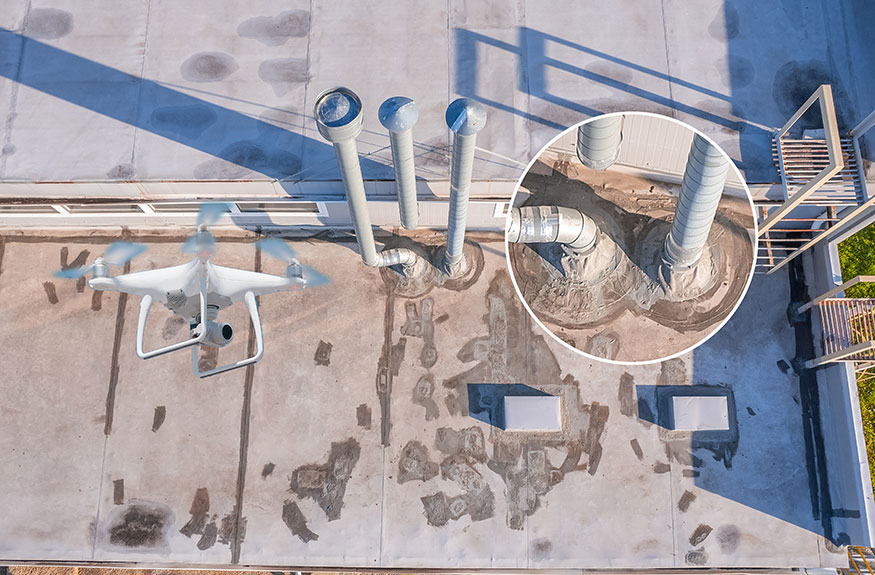Structural Inspection and Repair for Property Operations
Structural inspection and repair for property operations is a growing industry, with many professionals working to ensure the structural integrity and visual aesthetic of a building or parking structure remains sound. It requires knowledge of a wide range of building elements, practices, and functions. This resource covers the basics of structural inspection and repair for property operations. It explains what this work entails, who needs to know about it, and where to find additional resources for building operations professionals. Be sure to check out our links and resources at the end of this article.
What is Structural Inspection and Repair for Property Operations?
Structural inspection and repair for property operations is a branch of structural analysis that aims to identify and repair damages and defects in buildings or structures. The purpose of this inspection is to determine if structural problems exist and if they are warrants for costly repairs. This is often done to make sure a building is safe to put on the market or let as a rental property. A structural inspection is not only a visual inspection of the exterior of a building, but an assessment of the structure itself. This includes not just the structural elements such as beams and columns, but also the finishes (i.e. the paint, countertops, appliances, and plumbing), the presence or absence of problems with the foundation, and the condition of the roof structure. Structural faults can occur at any stage in the construction process, from the planning phase through to final installation. If a structure is not safe to use, the owner can have it declared unsafe and have it removed or functionally replaced.
Types of Structural Inspection and Repair for Property Operations
Structural inspections are divided into two main types: visual and functional. Visual inspections take place during the construction phase to ensure that all required inspections and repairs have been made. These inspections include Pascard Border (Borough), Structural Colorados, Structural Plain, and other visual inspections. Functional inspections are done once the structure is complete to ensure it still meets code. Visual inspections are usually combined with functional inspections to determine if a structure is structurally sound. If a structure has been verified to be sound, then the visual inspection is mainly intended to determine if the structure needs any repairs or replacements. This usually includes checking for dings and dents in the facade, as well as checking for signs of water intrusion and damage to mechanical systems.
What is the Purpose of a Structural Inspection and Repair for Property Operations?
Structural inspections are mainly intended to ensure the structure itself is in good order. If a structure is found to be in need of repairs, then property staff or a licensed structural engineer are responsible for identifying the problems and fixing them. If the structure is sound, then it is passed along with the report and no further action is required. However, if the structure is found to be defective, then the owner can have it declared unsafe, and the repair process can begin. In both cases, the structural inspector(s) will typically issue a written report that contains recommended actions. These actions could range from minor repairs to larger projects. In some cases, a structural engineer is used to review the report and make recommendations based on further review.
Where to Find Information on Structural Inspection and Repair for Property Operations
Structural inspection and repair information can be found in various sources, including books, magazines, and websites. The best source is probably your local structural engineer. The engineer will have a better understanding of structural issues and be able to recommend the most appropriate solution. You will also likely find information on structural inspection and repair in your Google search for “Engineers” or sourcing professionals through a trade association like the Building Owners and Managers Association of Georgia. There are also many books and articles written by professionals that can help you get up to speed quickly on the industry. These can help you to develop skills and become a more seasoned building operations professional in the field in this field.
Structural Inspection and Repair for Operations Kit
Understanding Steel Reinforced Concrete and Repair Methods
Building Structural Consideration for Older Buildings
Seismic and Other Considerations in Repairing Older Structures
Structural Inspection: When to Engage a Structural Engineer
Cracking Concrete: A Visual Review
Using Leaks to Identify Structural Issues
Resources for Structural Inspection and Repair
Structural Inspection and Repair Terms
Common Façade Deficiencies Visual Guide
Common Parking Structure Deficiencies Visual Guide
A deeper dive on Structural Inspection and Repair is presented in a two-part webinar series. The first webinar focuses on the tools and tips for inspection, and the second webinar focuses on the repair process. Both webinars may be viewed on-demand through a CRE Insight 365 membership.
Conclusion
With safety being the most essential amenity that you can provide to customers, structural inspection and repair should remain a priority for management and the building operations teams. This article and linked resources has been designed to provide you with the basics of structural inspection and repair for property operations.
To stay up to date on news and resources such as this and other topics of importance to the real estate industry, subscribe to the free CRE Insight Journal Newsletter using this link.









